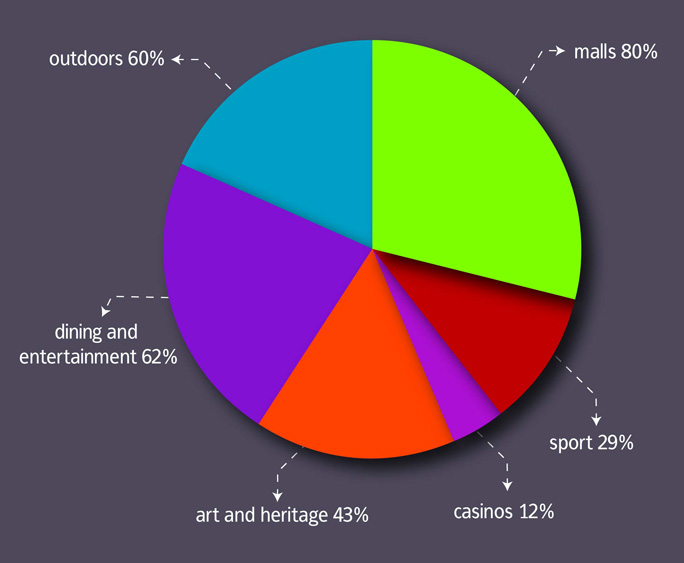


| introduction |
| vibrancy & diversity |
| arts & heritage |
| sport |
introduction |
||
'Africa is not rural scraps and pieces of pastiche…There is a prominent sense of modernity – townships or ghetto jazz riffs against the odds; designer clothes; modern materials; amazing cultural flexibility, urban life in transformation.' Chipkin, C. (2008) 'Johannesburg Transition' |
||
The Gauteng city-region (GCR) has a vibrant cultural sector characterised by a creative arts community, well-structured and well-organised music, film and television, radio, print, publishing and multimedia industries and has world class technology and skilled technical people servicing these industries. The GCR has a significant quantity of key cultural infrastructure including the following:
Given the significance and potential of the cultural sector in Gauteng, the Gauteng Provincial Government developed the Gauteng Creative Industries Development Framework strategy towards the achievement of the following goals:
Gauteng Provincial Government (2005) 'Creative Economy Development Framework' GCRO's 2009 'Quality of Life' survey found that people spend their recreational time in the GCR in the following ways: |
||
| leisure time in the GCR | ||
 |
||
| GCRO (2009) ‘Quality of Life’ survey | ||
The main factor attracting people to the GCR is employment and business opportunities, with the GCR as the industrial and financial centre of South Africa. Most government departments are located in the Cities of Tshwane and Johannesburg. The GCR has the largest share of higher education institutions in South Africa – six universities, namely: University of the Witwatersrand, University of Johannesburg, University of Pretoria, University of South Africa, Tshwane University of Technology, and Vaal University of Technology. These universities attract a considerable number of students from other African countries and are a host to high-profile national and international conferences. The GCR also has the highest number of foreign companies and foreign residents compared to other cities and city-regions in the country. The economic factors pulling people to the GCR cannot be detached from the quality of life in the city-region. However, places such as the Apartheid Museum, Soweto, Gold Reef City, Newtown Cultural Precinct, Constitutional Hill, Mandela House and Hector Pietersen Museum in Soweto, Voortrekker Museum, Union Buildings, Cradle of Humankind and Dinokeng and flea markets/craft shops attract tourists and promote cultural tourism on a daily basis. And the GCR’s impressive shopping malls are extremely attractive by world standards. The GCR has also not only played host to high-profile soccer events but also to high-profile rugby and cricket events. The GCR stages a number of national and international music/jazz festivals. As these cultural and natural amenities draw significant numbers of people, they contribute immensely to the GCR economy.
|
||

